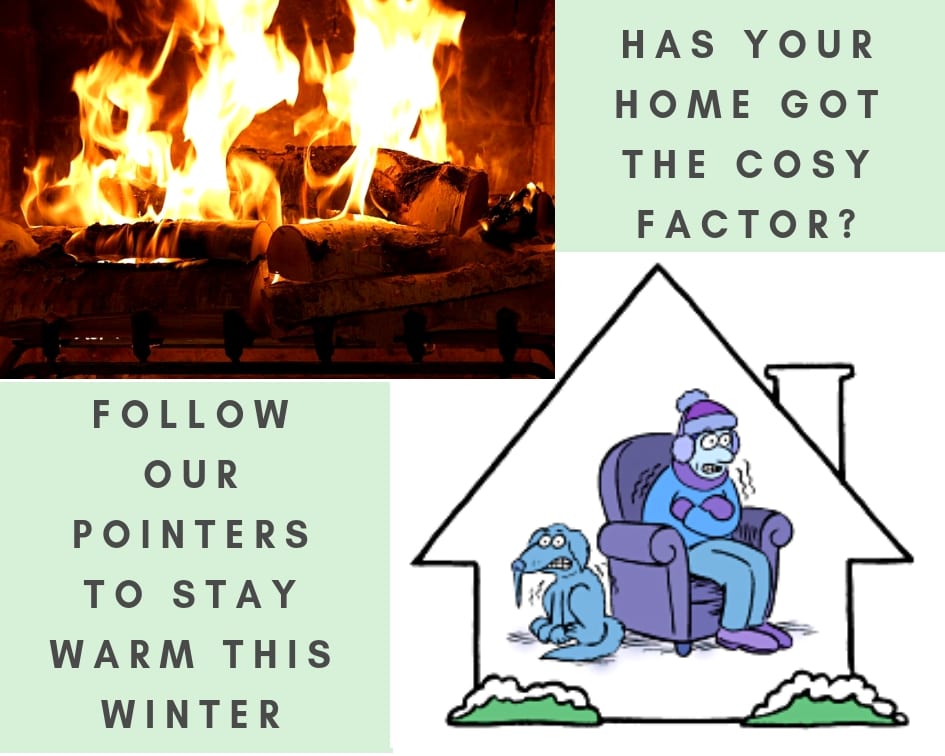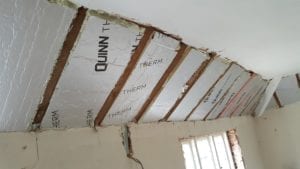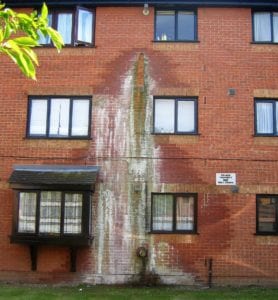Does your house have the chill factor?
We regularly get phone calls from home owners complaining about a cold house or a particularly cold area of a room. They’ve put up with it for so long but now want to know why it is occurring and what can be done to fix it.
Here at Tiffin’s we are experts on cold homes and have studied all the causes that create that unwanted chill feeling. Follow our pointers so you get that comfy factor back in your home…
Cold house fixes…

Insulation
FACT – Did you know… It was only in the late 1970’s that they started putting insulation in domestic buildings and even then it was only 50mm thick!
Now remember heat rises, so making sure your ceiling areas and loft is properly insulated is fundamental to keeping your house warm. Doing this you will also reduce your heating bills.
Check for missing insulation in your property; often skeiling areas and the areas around dormer windows are found to having missing insulating. This causes particular cold spots in areas of the house.
Increase insulation internally and externally with better quality products can make a huge difference particularly if you are in an older house (pre 1990’s). Once again this will help reduce your heating bills.
Improving insulation in your walls (IWI – internal wall insulation) (CWI – cavity wall insulation) will hugely help to give you a warmer home! They both help, but it is important to know which is best for your property depending on whether you are living in an ancient building pre 1919 or an older type pre 1990.

Windows
In a cold house draughts can be felt around old windows; predominantly sash windows or ones with wooden frames. Single-glazed panes are also guilty for heat loss.
The easy, but more costly solution to solve heat loss from your windows is to replace them altogether with energy efficient double or even triple glazed windows. Budget dependant this may not be a possible option for everyone.
There are some cheaper choices on the market such as secondary glazing, insulating film and draught strips, which are proven to have good results. Replacing your curtains with heavy quality curtains and keeping them drawn in winter will help to keep the cold air out.
Small draughts
Doors are the main source of heat loss. External doors can be fitted with draught excluding brushes, while internally you can use the long fabric sausage style draught excluders throughout your home.
Small draughts are generally any area where you can feel the chill coming in from outside. You can normally feel it on your skin as you walk past. Eliminating these areas will help to make all the difference.
Your letterbox is an area which could be letting in cold air, the simple solution to this is adding the brush in. Keyholes may be tiny but if they aren’t covered the cold air will get in, a simple small cover that slips over the hole is the easy answer to eradicate this.
Dampness & Maintenance
FACT – Wet or damp walls / structures are much colder than dry ones!
Take a look at your gutters and make sure they are not blocked so they can function properly! Blocked gutters will result in water being constantly splashed on to the brickwork resulting in wet walls.
Take a look at your external walls and get any repointing fixed or defective bricks replaced. Any defects in the pointing will let water seep in, once again causing wet walls.
Check your external ground levels; very often your smart new garden decking and patio has actually been laid to high thus bridging your damp proof course and therefore making it in effective. Your walls in turn get wet once again causing your home to get colder!
Take a look at our recommended product Stormdry; this clever external masonry protection cream can save you up to 27% on your energy bills.
You may also want to look at upgrading your damp proof course or damp proof membrane; as with all products the science behind them greatly improves over the years.

Heating & ventilation
It might be time to upgrade your radiators; new technology with up to date timers, programmers, thermostatic radiators valves will help rid you of a cold house. Plus, they’ll help to decrease your energy bills too!
Take a moment to look at the position of your radiators and the size of them in comparison to the room they are in. Are they fit to do their job properly?
Did you know that when you insulate you must also ventilate? If you don’t condensation will occur! Have you got passive vents installed? If not we can recommend the best ones on the market that are draught free, discreet and yet let the moisture out.
Have you heard of heat recovery extract fans? These cleverly designed fans warm the external air allowing that in whilst extracting the stale air from your home; it does all this whilst helping to keep your home warm!
Fireplaces and chimneys
FACT – Chimneys and flues are high energy loss areas! They are designed to extract air from your home, whether or not the fire is burning! (Well no wonder you have a cold house!!!)
When you are not using your fireplace it is worth thinking about “blocking” the chimney off to reduce the airflow. Chimney dampers or chimney balloons can be put in place when the fire is not being used.
Ground Floors
Timber suspended floors are often forgotten about and can get rather draughty!
Lift a floor board and take a look…. Do you see insulation between the joists? If not we can recommend the most appropriate insulation material which is both airtight and vapour open in order to allow the floor void to remain an open vented space preventing condensation, rot and decay but whilst still helping to keep your home warm.







